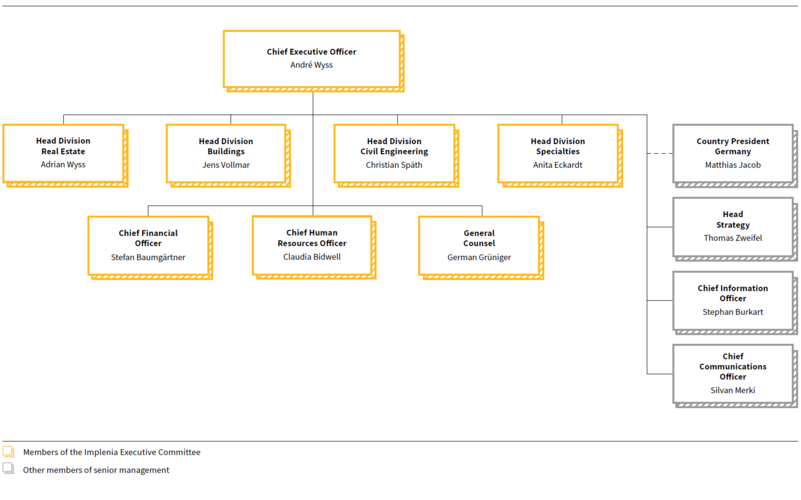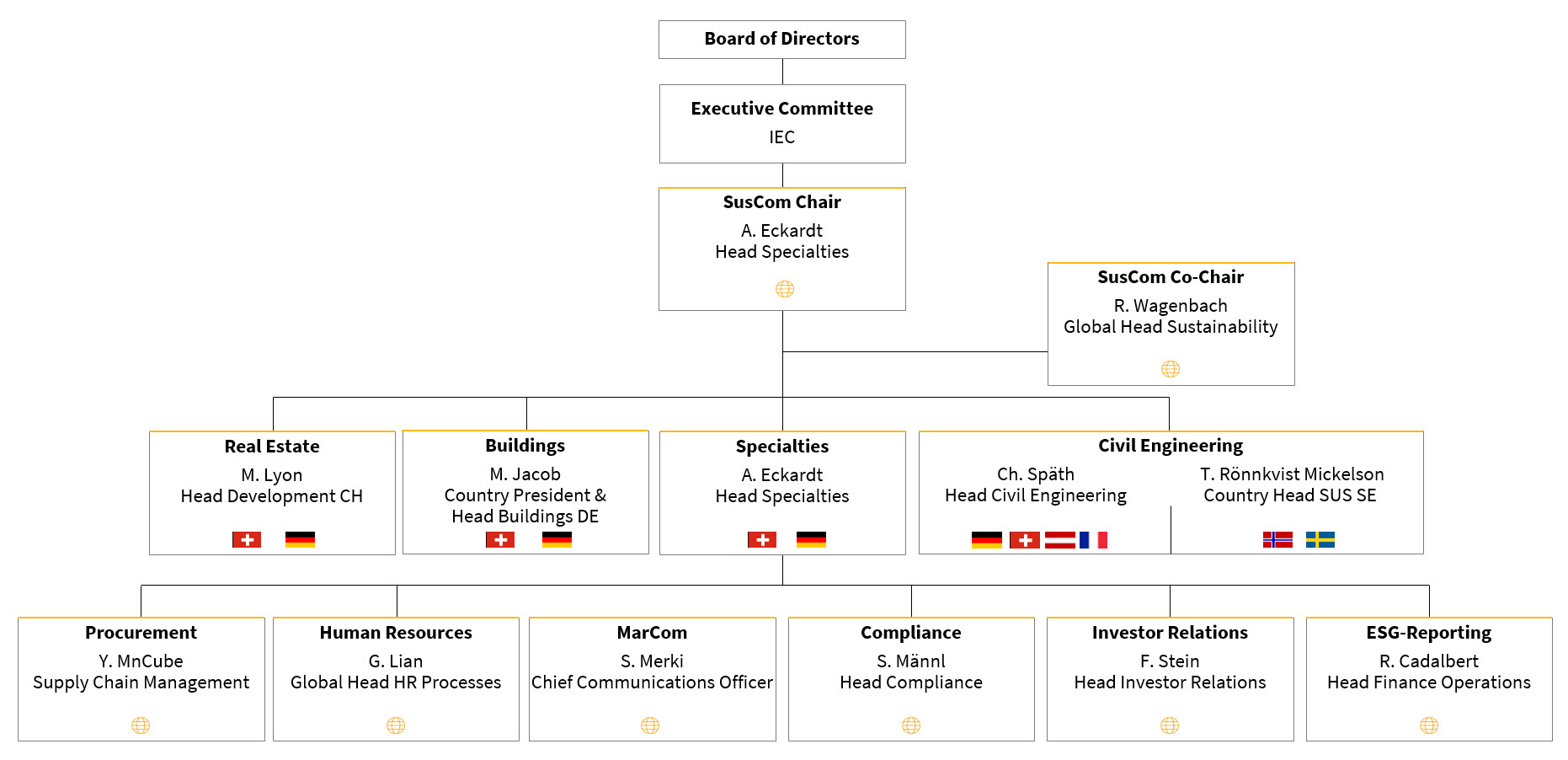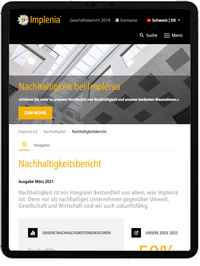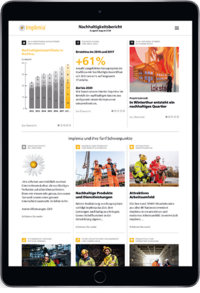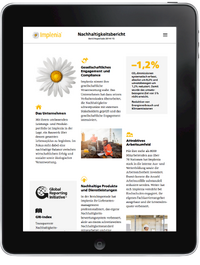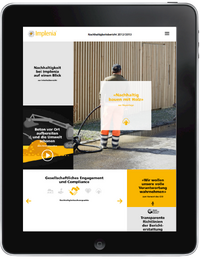

Sustainability Governance
Sustainability at Implenia
Sustainability is one of Implenia's five corporate values and is therefore since 2009 firmly anchored in its culture. Implenia's aspiration is to think holistically about sustainability and to be a leader in all dimensions - environment, economy and society.
Content

Implenia at a glance
GRI 2-1, 2-6
As Switzerland’s leading construction and real estate service provider, Implenia develops and builds homes, workplaces and infrastructure for future generations in Switzerland and Germany. It also offers tunnelling and related infrastructure projects in the markets Norway, Sweden, France, Austria and northern Italy. Formed in 2006, the company can look back on around 150 years of construction tradition. Implenia brings together the know-how of its highly skilled development, planning and execution units under the umbrella of an integrated leading multinational construction and real estate service provider. With its broad offering and the expertise of its specialists, the Group realises large, complex projects and provides client-centric support across the entire life cycle of a building or structure. It focuses on client needs and on striking a sustainable balance between commercial success and social and environmental responsibility. Implenia, with its headquarters in Opfikon near Zurich, employs more than 7,600 people across Europe and posted revenue of CHF 3.6 billion in 2022. The company is listed on the SIX Swiss Exchange (IMPN, CH0023868554). All the financial figures can be found in the Annual Report.
GRI 2-23
GRI 2-2, 2-6
To achieve success in various market segments, Implenia has organised itself into four divisions, each of which can use its collective expertise to operate with entrepreneurial independence: Real Estate, Buildings, Civil Engineering and Specialties. The global functions (Finance/Procurement, HR, Legal/Compliance, Marketing/Communications, Strategy and IT) support the divisions and provide Group-wide leadership in their areas of expertise. In order to maintain deep local roots and a close connection to customers, Implenia also has regional organisations that provide services from all divisions.
GRI 2-9, 2-10, 2-11, 2-15
Implenia’s highest operational body is the Implenia Executive Committee (IEC), which is made up of the CEO, the CFO, the CHRO, the General Counsel, and the four Division Heads. The Group’s highest supervisory body is the Board of Directors. This bears financial responsibility, appoints and monitors management and defines the Group’s strategy. The seven members of the Board are independent of the IEC and do not perform any operational roles within Implenia.
Sustainability organisation
Implenia has set up structures that ensure sustainable development is embedded within the company: The Global Sustainability team helps the divisions and global functions achieve their sustainability goals. In collaboration with local specialists from the divisions and countries, the experts at Global Sustainability are in charge of sustainability management and reporting; they support sustainability measures within construction projects and promote initiatives at Group level. The Global Sustainability team provides both project-specific services (Sustainable Construction and Environmental Protection) and internal services (Sustainable Implenia). The head of the team, the Global Head Sustainability, reports directly to the member of the Implenia Executive Committee (IEC) responsible for sustainability.
GRI 2-9, 2-12, 2-13, 2-14, 2-17, 2-23, 2-24
The Global Sustainability Department is supported and overseen by the Sustainability Committee (SusCom), which is made up of representatives from all the divisions and global functions. The Global Head Sustainability functions as co-chair of the Sustainability Committee. SusCom meets four times a year to discuss the latest issues, define sustainability goals, take strategic decisions and launch Group-wide initiatives. SusCom also reviews the Group’s sustainability reporting.
The company’s highest operational body, the Implenia Executive Committee (IEC), also deals regularly with sustainability issues, approves the necessary resources and represents these issues to external stakeholders. Anita Eckardt sits on the IEC as Head Specialities Division and also chairs the Sustainability Committee. She advocates for sustainability-related matters as delegate to the management.
The Board of Directors also deals with the company’s sustainable development. It approves the sustainability strategy and corresponding long-term Group objectives. The CEO reports to the Board of Directors on sustainability issues about eight times a year. The Chair of SusCom also provides detailed information to the Board of Directors three times a year.
Sustainability management
GRI 3-3
The concept of sustainable development is implemented across all areas and put into practice throughout the company. It is a Group-wide responsibility that touches on all activities and requires the commitment of every employee at all levels. This is why Implenia practises an integrated form of sustainability management.
The Global Sustainability department’s job is to address significant issues in consultation with stakeholders, set Group-wide standards and propose measures and targets for the divisions and global functions. Defined measures are implemented in collaboration with the relevant divisions and global functions.
Responsibility for implementation normally rests directly with operational line managers or with the global functions, rather than with the Global Sustainability Department itself. Each division has at least one person responsible for safety, quality and sustainability. Implenia thus ensures that all business units engage intensively with sustainability issues and works to achieve the goals.
At the beginning of each year, the divisions and global functions work with the Global Sustainability Department to define their annual goals, which are based on the company-wide Sustainability Goals. Over the course of the year, the Executive Committee meets the individuals responsible for the targets at a series of “Touchpoint” sessions. At the first Touchpoint, the annual goals are discussed, amended where necessary and signed off. At subsequent Touchpoints, the progress of implementation is discussed and next steps are defined. This process allows the company to check regularly whether the measures are on course, and to coordinate between individual business units.
Recognition from rating agencies
In the most recent rating (2022) by EcoVadis, the world’s largest provider of sustainability ratings, Implenia achieved 67 out of a possible 100 points (Scorecard). This result pushes the company up from last year’s silver status to gold, making it one of the top five percent of the over 100,000 businesses rated by EcoVadis.
In 2022, Implenia also received very good scores from other rating agencies that focus on sustainable investments, including Sustainalytics and MSCI. For more details see the “Financial and Operational Excellence” chapter.
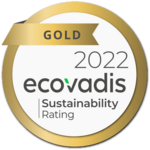
Sustainability strategy
Sustainability has been anchored in Implenia’s values since 2009 as an integral part of the company’s strategy. The following timeline shows the most important milestones achieved over the years.
Our milestones
6. Sustainability Report
(Reporting year 2022)

2022


2021


2020


2019


2018


2017



2016



1. Sustainability Report
2011
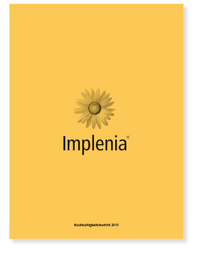
2011

2010


2009

Impact of business activities
GRI 2-6, 3-3
Around 90,0001 people work in the Swiss construction sector, and each year they generate around CHF 36 billion2 of added value, which is equivalent to around five percent of Switzerland’s GDP. In doing so they process more than 60 million tonnes of material3 in total.
The construction sector’s annual environmental impact comes to a total of 57 trillion environmental impact points4, of which energy consumption is the main cause (56%).

These Swiss figures give an idea of the construction sector’s immense significance for the economy, society and environment. Implenia’s activities also have a major impact on all three spheres of sustainability. The company accepts the obligation this creates and has made a long-term commitment to the welfare of current and future generations.
Implenia’s opportunity to influence a construction project's environmental impact varies depending on where its products and services sit within the value chain. For example, if it is planning a project from the start, the company can make fundamental decisions about using more environmentally friendly materials and ensuring the building is energy efficient once in operation. If it brought in just to build, however, it will focus carrying out the work involved with the least possible environmental impact (see next chapter for more information).
Implenia uses its leading position in the Swiss construction sector to gain broader acceptance for sustainable approaches – by carrying out pilot projects, for example, by collaborating on standards and by compelling business partners to comply with its Code of Conduct.
Implenia seeks to mitigate climate change and works systematically to reduce its greenhouse gas emissions. In its own projects the Group does this by using innovative techniques and materials that use less grey energy, and by minimising direct consumption of fossil fuels at building sites, depots and production facilities.
1 Schweizerischer Baumeisterverband SBV (2022): Zahlen und Fakten 2022
2 SECO, dargestellt in «Schweizerischer Baumeisterverband SBV (2022): Zahlen und Fakten 2022»
3 EMPA (2019): Synthesis report on “Projekt MatCH”
4 EMPA (2016): Projekt MatCH
Where the company can have an influence
GRI 3-3
With buildings that it develops itself from scratch, Implenia can design and plan sustainably right from the start. In these cases it follows the relevant external guidelines, labels and standards and uses its in-house evaluation tool “Gesamtbewertung Nachhaltiges Bauen” (GeNaB® “overall assessment for sustainable construction”).
With many projects, however, Implenia tenders for private and public sector contracts as general or total contractor, meaning that it has to follow plans made prior to its involvement. In these projects, the environmental impact of the building in its operational phase – energy intensity for example – will already have been largely determined by the client. Implenia can only have an indirect influence here, perhaps by suggesting more socially and environmentally friendly options and materials. Ultimately, however, the decision rests with the client.
When it plans exactly how to carry out the work, though, Implenia still has plenty of opportunity to influence the social, environmental and economic impact of a construction project. The company can make most of the decisions about what machinery to use, how to separate and dispose of waste, and what working conditions should apply on site. However, the emissions produced during construction itself are relatively low compared to the total emissions of a building across its entire life cycle.
As a major buyer of construction materials such as concrete, steel, gypsum, natural stone and glass, Implenia is highly dependent on the availability of these resources; but the company can make a big difference by taking sustainability criteria into account in its procurement. It can favour locally sourced construction materials, or only choose those that have a low grey energy profile. This requires buy-in from the client and a transparent supply chain (see the Supplier management chapter).
Risks and opportunities created by climate change
GRI 201-2
Proactive management of opportunities and risks is a crucial element of successful corporate management. Implenia uses a comprehensive Enterprise Risk Management (ERM) system based on integrated processes and clearly defined responsibilities. ERM also helps Implenia assess opportunities and risks relating to sustainability and climate change.
Implenia has defined a series of five-level impact scales for all risks, ranking them from very low to very high. They cover topics such as finance, compliance, environment, health and safety, and reputation. The probability of a risk occurring is also rated alongside its potential impact.
As a construction and real estate services company with a broad portfolio, Implenia is affected by climate change in a variety of ways. As shown in the table below, climate change brings economic opportunities as well as risks.
Changes in the climate could, for example, prompt a response from customers that increases the number and scope of orders for renovation and modernisation. Measures to mitigate climate change – such as better insulation and renewable energy systems – offer Implenia opportunities to apply its expertise in these areas. At the same time, however, increasingly extreme weather can pose real problems for companies and make it more difficult for them to make plans.
It is almost impossible from the current standpoint to predict what the ultimate effect of climate change will be on businesses. What is certain, however, is that Implenia needs to prepare for the expected change and be ready for future developments.
When managing climate risks and opportunities, Implenia is guided by the recommendations of the International “Task Force on Climate-related Financial Disclosures” (TCFD)1.
| Regulations |
|
| Technology |
|
| Law |
|
| Market |
|
| Reputation |
|
| Acute physical risks |
|
| Chronic physical risks |
|
1 TCFD distinguishes between transition risks and physical risks. Transition risks include political, legal, technological and market-oriented events that negatively affect companies’ finances and reputations. TCFD defines physical risks as those directly caused by climate change. These include “acute risks”, such as cyclones, hurricanes, storm surges and other weather events. “Chronic risks” are long-term effects such as permanently elevated temperatures or recurring heat waves.
Stakeholder groups
GRI 2-6, 2-12, 2-29
Implenia’s Code of Conduct defines the company’s most important stakeholders. Our dealings with our stakeholders are briefly described below.
Employees
All of Implenia’s managers are required to foster active dialogue with their staff. One major vehicle for this dialogue is the target-setting meeting, which takes place every year as part of the management-by-objectives strategy and which is supported by a web-based personnel management tool. The company uses various internal communications tools, including the employee magazine “Impact”, the Intranet, staff events (in-person and virtual) and an electronic newsletter. The CEO communicates directly with employees several times a year in his CEO Letter and at “townhall” meetings.
Implenia actively manages a variety of internal and external social media platforms designed to increase contact between employees. As well as the Intranet these include external platforms such as LinkedIn, Xing, Facebook, Twitter, Youtube, TikTok and Instagram.
Customers
Implenia’s customers are at the heart of everything it does. As well as numerous contacts at the project level, the company also seeks general, non-project-specific communication with major customers. These regular discussions are important for mutual understanding and provide Implenia with a valuable external view.
Meetings take place at management level each month to ensure customers are served as effectively as possible. A survey is conducted after each project finishes so customers can provide detailed feedback on working with Implenia and rate the company’s services.
Thanks to the active feedback culture and the targeted optimisation of internal and external interfaces, Implenia has moved closer to its customers in recent years.
Shareholders and investors
Implenia follows an open, transparent and timely information policy in the interests of its shareholders, investors and the general public. With its ongoing reporting, Implenia ensures equal treatment of all stakeholders with regard to timing and content.
Comprehensive information is available online to all investors, journalists and other interested parties under the “Media & Investors” link on the company website. Sustainability-focused investors can also find more information in the “Sustainable Investment” section of the site.
Business partners
Implenia wants business partners to share the company’s core values. Subcontractors, suppliers and manufacturers have to sign up to the Code of Conduct. Implenia has a supplier management system, which makes business relationships more transparent and enables communication with suppliers and subcontractors on an equal footing. Regular audits are conducted with the most important suppliers, providing an opportunity to discuss possible improvements. Such communication is also cultivated at annual “supplier days”.
Public authorities
Implenia is committed to open and professional relations with governmental institutions. The company takes great pains to comply with all the laws that apply to its heavily regulated field of activity. In the event of alleged or actual conflicts, the company cooperates fully with the authorities, helps with investigations and communicates transparently.
It also maintains close contact with public sector bodies when engaged in urban development projects. Implenia runs such major projects in close cooperation with the relevant authorities and prefers to hold architectural design competitions to ensure the highest possible standards in terms of sustainability, functionality and aesthetics.
Social partners and associations
As one of the largest employers in the Swiss construction sector, Implenia has a special responsibility to its employees. Consequently, our management maintains a constant, active dialogue with our social partners. Regular meetings are held to share information and discuss each other’s needs. Implenia’s representatives work in various organisations and associations, such as regional builders’ associations and the Network for Sustainable Construction Switzerland (NNBS).
Media
Implenia runs an active and open communications policy. Corporate Communications provides the media with timely and comprehensive information about important events. Journalists are regularly invited to information events designed to keep them up-to-date (in person or virtually) with the company’s activities and business performance. In this way Implenia provides transparency to the broader public as well as to its specific stakeholders.
Society
Media work is only one part of the Group’s information sharing efforts. Another important pillar of communication is direct contact with people to give them an insight into the world of Implenia. For example, the company invites school children to visit construction yards and projects in Switzerland and Germany as part of its annual Futures Day. Implenia Norway also presents its projects to the public: it invited the entire population of Oslo to come and take a look at its large metro construction site there, for example.
Material Topics
GRI 2-12, 3-2
Implenia’s sustainability strategy is based on five thematic priorities. The company first formulated these in a comprehensive internal process in 2010 and has applied them consistently ever since. These priorities cover the economic, ecological and social aspects of sustainability and shape the whole Group’s commitment to sustainability. They also form the backbone of the company’s sustainability reporting.

In 2015 Implenia, working with internal and external stakeholders, conducted a materiality analysis based on guidelines set by the Global Reporting Initiative (GRI). The analysis confirmed that the company and its sustainability strategy were on the right track. Two years later the materiality analysis was updated and clarified as part of a management workshop. The last review of the main sustainability issues took place in 2020, when Implenia developed its sustainability goals for 2025.
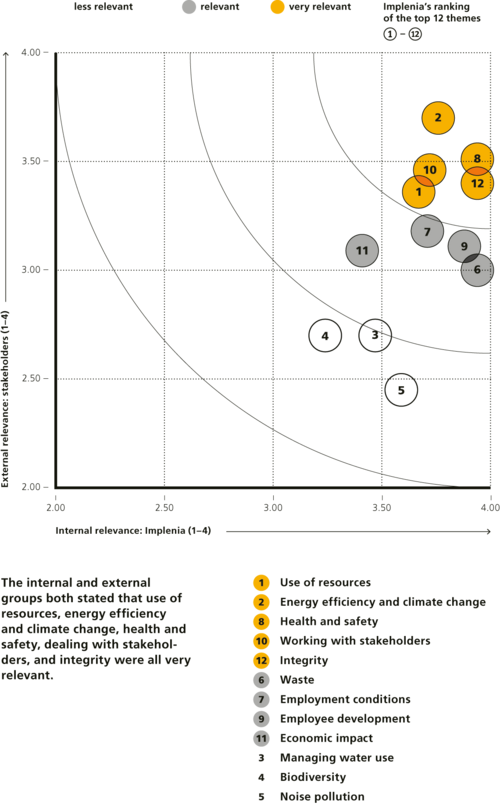
Based on this analysis, the following material topics were identified in accordance with the GRI Standards:
Economic Performance
Anti-corruption
Anti-competitive Behavior
Energy
Emissions
Supplier Environmental Assessment
Employment
Occupational Health and Safety
Diversity and Equal Opportunity
Non-discrimination
Supplier Social Assessment
Implenia's priorities: strategic approaches and key topics
Why is the topic relevant and what are the risks and opportunities?
- Construction projects impact the natural world and cause environmental emissions. The way Implenia builds may also indirectly affect the emissions generated once the completed building is being used (energy consumption for heating and cooling, for example).
- A large proportion of emissions are generated in the production and procurement of construction materials. It is important, therefore, to raise awareness among suppliers and subcontractors and, where possible, to work with sustainable partners.
- The construction industry generates considerable quantities of building waste. It is also one of the largest consumers of energy and, consequently, one of the largest generators of CO2 emissions.
- Knowledge about the environment is sometimes lacking on construction sites. Environmental protection is not yet consistently embedded in all core processes.
- Construction is an industry in which there is a high risk of accidents, so ensuring a safe working environment is Implenia’s highest priority.
- There is a shortage of skilled personnel in the construction industry. Training and developing its own professional staff is therefore crucial to the Group’s long-term effectiveness.
- Long-term retention and continuing development of its employees is central to the company’s performance, culture and stability.
- To prevent infringements of the Code of Conduct, employee-awareness measures need to be continued and the principles set out in the Code need to be embedded in business processes.
- The impact of Implenia’s business activities on the environment, society and the economy is far-reaching. It is important for the company to be involved in the long-term development of its immediate and wider environment.
- Knowledge of our own impact is essential if we are to assess and continually develop our mitigation efforts.
- As an international group, it is important for us to share experiences and know-how within and between all business units.
- Clear processes and instructions can help prevent errors and increase efficiency. Owing to the high risks and generally lower margins associated with building projects, efficient and intelligent processes are absolutely critical.
Sustainable Development Goals
GRI 2-23
Implenia is guided in its sustainability work by the UN’s Sustainable Development Goals (SDGs). The company wants to help the world achieve these goals. Implenia covers the following SDGs with its sustainability focus areas:
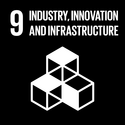
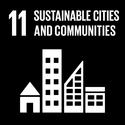

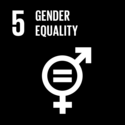





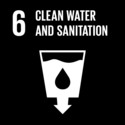

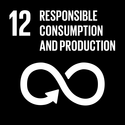
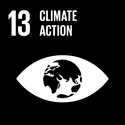
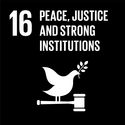

2025 goals
GRI 3-2, 3-3
Implenia has set itself long-term sustainability goals based on a comprehensive materiality analysis with internal and external stakeholders and taking into account the UN’s Sustainable Development Goals. The current goals have been set for achievement by the end of 2025. To ensure transparency, Implenia uses the goal dashboard to report regularly on the latest status of the work and the degree to which the goals have been met. The dashboard also shows the sub-goals, derived from the main objectives, for each division and global function.
Standards & regulations
The scope of ESG regulations in Implenia’s markets has steadily expanded over the years, placing ever greater demands on the company.
Implenia is particularly affected by the new regulations shown below. These are currently being analysed by working groups made up of representatives of all affected departments and the Implenia Executive Committee. The company is gradually implementing the necessary measures. This includes disclosing the legally required information as part of its corporate communications.
- EU Corporate Sustainability Reporting Directive (CSRD)
- EU Taxonomy for Sustainable Activities
- EU Corporate Sustainability Due Diligence Directive (CSDDD)
- Swiss Ordinance on Due Diligence and Transparency in Relation to Minerals and Metals from Conflict-Affected Areas and Child Labour
- Swiss Ordinance on Climate Reporting
- German Supply Chain Due Diligence Act
- Norwegian Transparency Act

